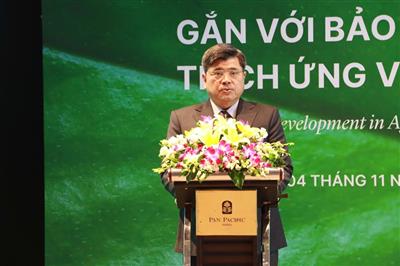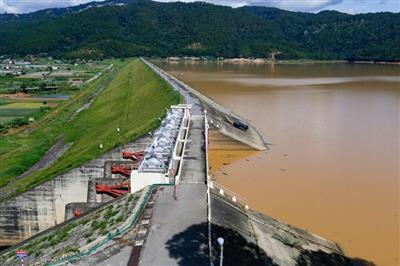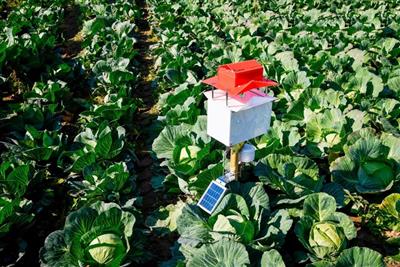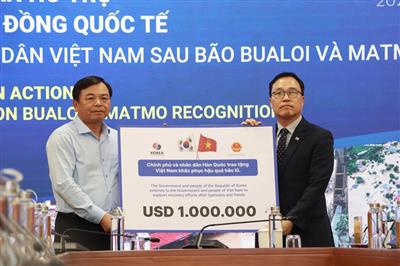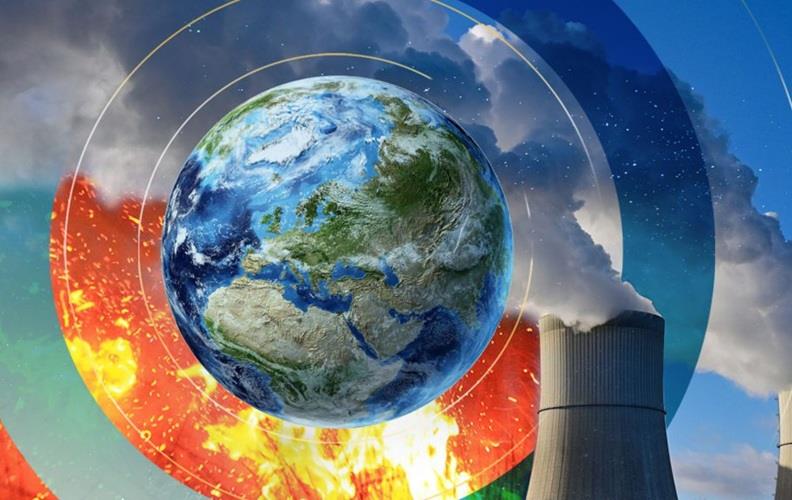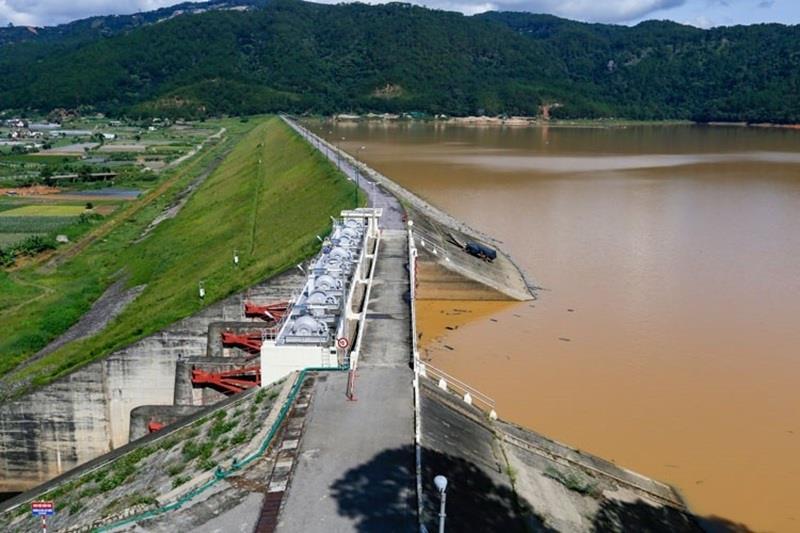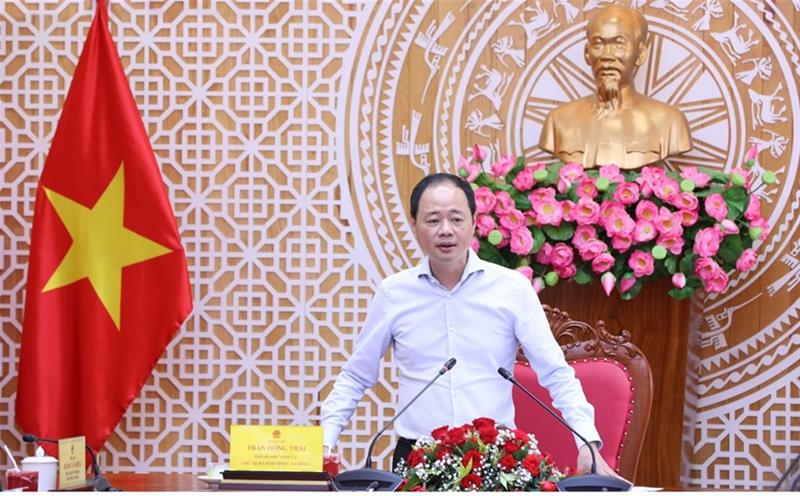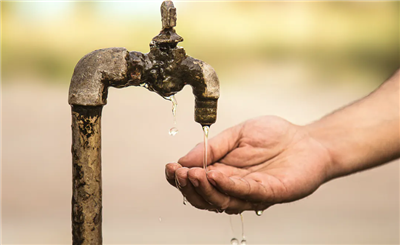
Enhancing understanding of carbon neutrality to accelerate the green transition in agriculture
16/10/2025TN&MTPromoting carbon neutrality has become an urgent requirement for advancing sustainable agriculture and realizing Vietnam’s commitment to net-zero greenhouse gas emissions. Strengthening understanding of greenhouse gas measurement, reporting, and verification (MRV) systems, as well as the carbon credit mechanism, is a crucial step for the agricultural sector to actively engage in the carbon market and foster a genuine green transition.
In this context, a training workshop themed “Carbon neutrality – Towards sustainable agriculture” was held in Nghe An province on October 17, gathering managers, experts, and journalists specializing in agriculture and the environment nationwide. The event provided foundational knowledge, updated new trends, and introduced practical tools to support communication on greenhouse gas reduction policies in the agricultural sector.
Delivering the opening remarks, Mr. Nguyen Ngoc Thach, Editor-in-Chief of the Newspaper of Agriculture and Environment, emphasized: “The media serves as a bridge connecting policy, science, business, and communities, helping the concept of ‘carbon neutrality’ become familiar and inspiring collective action. Each article not only informs but also inspires action toward a greener, more sustainable Vietnam. Every quality story is a ‘seed of trust,’ encouraging enterprises and farmers to move together toward a sustainable future.”
Vietnam’s commitment to achieving net-zero emissions by 2050, made at COP26, marks a profound transition across the energy, transport, agriculture, industry, and urban sectors. In this process, the media plays a crucial role in translating complex technical concepts—such as climate change, carbon neutrality, and Net Zero—into clear, accessible narratives that raise awareness, share good practices, and promote social responsibility.
Enterprises must take decisive action to achieve Net Zero by 2050
At the workshop, Mr. Hoang Anh Dung, CEO of INTRACO Joint Stock Company, shared insights on carbon emissions, climate strategies, and Vietnam’s pathway to achieving its net-zero target by 2050. According to Mr. Dung, “carbon neutrality” refers to the balance between the amount of carbon dioxide emitted and the amount absorbed or offset. Enterprises can achieve this balance by reducing emissions to the lowest possible level and compensating for the remainder through the purchase of carbon credits or by investing in carbon offset projects.
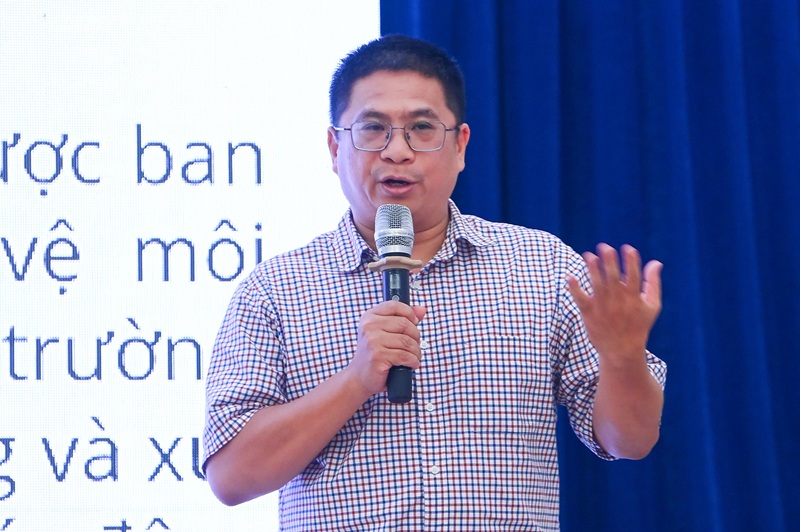
Mr. Hoang Anh Dung highlights that Net Zero is not a final destination but a long-term journey requiring strong commitment and concrete actions (Photo: Bui Anh)
Meanwhile, “Net Zero” is a broader concept that encompasses all greenhouse gases (GHGs), requiring that the total amount of emissions be fully removed from the atmosphere. Achieving this goal calls for comprehensive management across three scopes of emissions: direct emissions from owned or controlled sources (Scope 1); indirect emissions from purchased energy (Scope 2); and indirect emissions generated throughout the value chain (Scope 3). “Net Zero is not a final destination but a long-term journey that requires strong commitment and concrete actions,” Mr. Hoang Anh Dung noted.
According to the World Bank, Vietnam will need to mobilize around USD 368 billion to achieve net-zero emissions by 2050, including more than USD 135 billion during 2021–2030 for renewable energy development, grid infrastructure, and energy storage. The National Climate Change Strategy sets specific targets: renewable energy to account for over 90% of the energy mix, annual reforestation of 1.71 million hectares, capture of 90% of methane from landfills and livestock waste, and promotion of green hydrogen and carbon storage technologies.
Currently, 31 Vietnamese enterprises have joined the Science Based Targets initiative (SBTi) to align their emission reduction goals with international standards. Among them, TH True Milk is a pioneer, achieving PAS 2060 Carbon Neutral certification for its fresh milk and bottled water products with technical support from INTRACO — a milestone affirming Vietnamese enterprises’ proactive role in the green transition.
INTRACO emphasizes that to reach Net Zero, businesses must conduct comprehensive GHG inventories, reduce emissions throughout their value chains, invest in clean technologies, and offset residual emissions through certified carbon removal projects.
“Businesses must move from green commitments to green actions—measurable, verifiable, and aligned with global standards,” Mr. Hoang Anh Dũng concluded.
Strengthening greenhouse gas measurement and inventory in Agriculture
Presenting a paper at the workshop, Assoc. Prof. Dr. Mai Van Trinh, Director of the Institute of Agricultural Environment, stressed that identifying, measuring, and managing greenhouse gas emissions are indispensable requirements for Vietnam to build a green, sustainable, and globally competitive agricultural sector.
Dr. Mai Van Trinh noted that emissions not only affect the environment but also influence productivity, quality, and market access for Vietnamese agricultural products. Major trading partners such as the EU, Japan, and the United States have introduced carbon standards as new non-tariff barriers.

Dr. Mai Van Trinh warned that without proactive emissions management, Vietnamese agriculture could lose its competitiveness in international markets
The Institute of Agricultural Environment has developed several practical mitigation measures, particularly in rice cultivation. These include Alternate Wetting and Drying (AWD) irrigation, optimized fertilizer management, and the reuse of rice straw for composting or biochar production instead of open burning. Such practices can reduce methane (CH₄) emissions by 30–55%, while enhancing soil fertility and lowering production costs.
Another promising approach is applying circular economy models in rice production, where post-harvest straw is utilized as raw material for mushroom cultivation, organic fertilizer, or biochar. The CARICE model, developed by Dr. Mai Van Trinh’s team, has achieved up to 40% GHG reduction compared to conventional methods.
He further highlighted that as carbon becomes a measurable and tradable asset, the agricultural sector must quickly adapt. Investing in emission monitoring technology, circular production models, and internationally standardized MRV systems will help strengthen Vietnam’s position in the emerging green economy.
The media’s role in removing barriers to carbon neutrality
According to Assoc. Prof. Dr. Pham Thi Mai Thao, the media plays a pivotal role in shaping public understanding and driving behavioral change toward the green transition. Through accurate and accessible reporting, journalists can help audiences comprehend technical concepts such as Net Zero, carbon credits, MRV, and the carbon economy, linking them to real-life examples from enterprises and communities.
Dr. Pham Thi Mai Thao underscored the supervisory and policy advocacy functions of journalism. The media should reflect institutional bottlenecks, such as overlapping regulations, limited green finance incentives, and delays in MRV implementation, while holding policymakers accountable for progress in emission reduction, data transparency, and the effective use of climate finance.
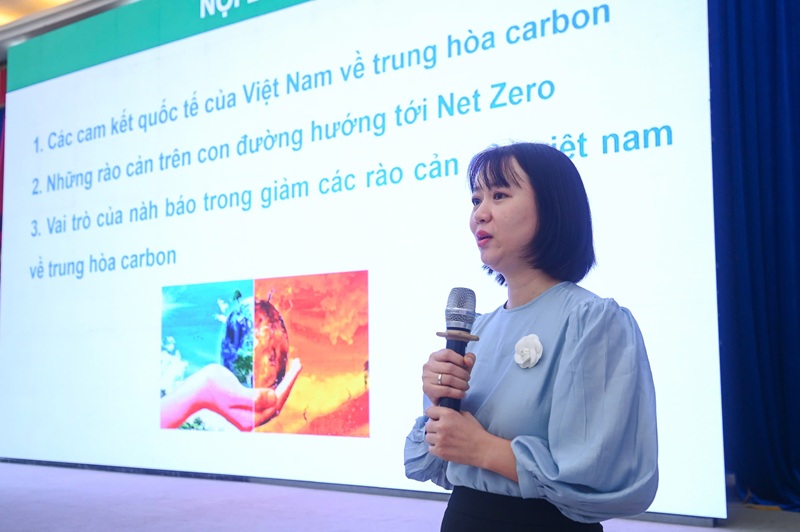
Dr. Pham Thi Mai Thao concluded that journalism should not only observe the green transition but actively be part of it.
She added that journalism can shape sustainable lifestyles through campaigns on green consumption, eco-friendly production, and responsible tourism. The press should also highlight successful green transition initiatives, creating momentum for replication and competition among enterprises.
Furthermore, journalism can serve as a bridge for collaboration among government agencies, businesses, researchers, and social organizations, fostering a Climate Journalism Network that facilitates knowledge exchange and innovation in climate communication.
Dr. Pham Thi Mai Thao recommended that reporters continuously enhance their capacity by strengthening their understanding of greenhouse gases, energy systems, carbon economics, and data-driven storytelling to communicate climate information in a clear, visual, and impactful manner. “Journalism should not merely observe the green transition—it should be part of it,” she concluded.
The workshop provided participants with updated and practical knowledge, enhancing their capacity to communicate issues of carbon neutrality and net-zero emissions with depth, accuracy, and public appeal. With these insights, journalists are expected to translate technical information into meaningful narratives—helping advance public policy, foster social responsibility, and affirm the vital role of the media in Vietnam’s journey toward national carbon neutrality by 2050.
Khanh Linh - Ngoc Huyen




